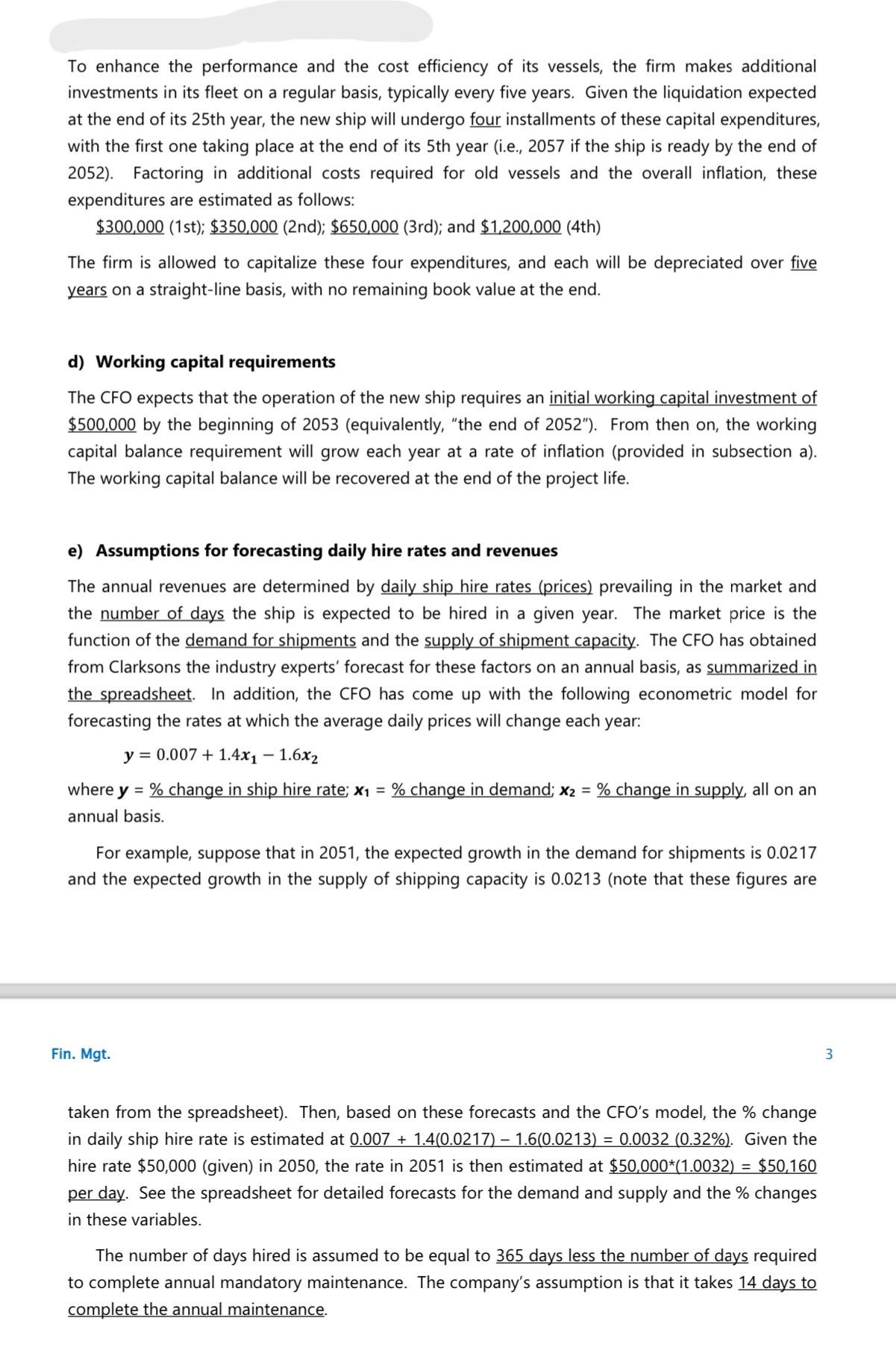Answered step by step
Verified Expert Solution
Question
1 Approved Answer
To enhance the performance and the cost efficiency of its vessels, the firm makes additional investments in its fleet on a regular basis, typically

To enhance the performance and the cost efficiency of its vessels, the firm makes additional investments in its fleet on a regular basis, typically every five years. Given the liquidation expected at the end of its 25th year, the new ship will undergo four installments of these capital expenditures, with the first one taking place at the end of its 5th year (i.e., 2057 if the ship is ready by the end of 2052). Factoring in additional costs required for old vessels and the overall inflation, these expenditures are estimated as follows: $300,000 (1st); $350,000 (2nd); $650,000 (3rd); and $1,200,000 (4th) The firm is allowed to capitalize these four expenditures, and each will be depreciated over five years on a straight-line basis, with no remaining book value at the end. d) Working capital requirements The CFO expects that the operation of the new ship requires an initial working capital investment of $500,000 by the beginning of 2053 (equivalently, "the end of 2052"). From then on, the working capital balance requirement will grow each year at a rate of inflation (provided in subsection a). The working capital balance will be recovered at the end of the project life. e) Assumptions for forecasting daily hire rates and revenues The annual revenues are determined by daily ship hire rates (prices) prevailing in the market and the number of days the ship is expected to be hired in a given year. The market price is the function of the demand for shipments and the supply of shipment capacity. The CFO has obtained from Clarksons the industry experts' forecast for these factors on an annual basis, as summarized in the spreadsheet. In addition, the CFO has come up with the following econometric model for forecasting the rates at which the average daily prices will change each year: y = 0.007 +1.4x1 - 1.6x2 where y=% change in ship hire rate; x = % change in demand; x2 = % change in supply, all on an annual basis. For example, suppose that in 2051, the expected growth in the demand for shipments is 0.0217 and the expected growth in the supply of shipping capacity is 0.0213 (note that these figures are Fin. Mgt. taken from the spreadsheet). Then, based on these forecasts and the CFO's model, the % change in daily ship hire rate is estimated at 0.007 + 1.4(0.0217) - 1.6(0.0213) = 0.0032 (0.32%). Given the hire rate $50,000 (given) in 2050, the rate in 2051 is then estimated at $50,000* (1.0032) = $50,160 per day. See the spreadsheet for detailed forecasts for the demand and supply and the % changes in these variables. The number of days hired is assumed to be equal to 365 days less the number of days required to complete annual mandatory maintenance. The company's assumption is that it takes 14 days to complete the annual maintenance. 3
Step by Step Solution
There are 3 Steps involved in it
Step: 1
Based on the given information the assumptions for forecasting daily hire rates and revenues are as ...
Get Instant Access to Expert-Tailored Solutions
See step-by-step solutions with expert insights and AI powered tools for academic success
Step: 2

Step: 3

Document Format ( 2 attachments)
6642dc47307e4_973557.pdf
180 KBs PDF File
6642dc47307e4_973557.docx
120 KBs Word File
Ace Your Homework with AI
Get the answers you need in no time with our AI-driven, step-by-step assistance
Get Started


